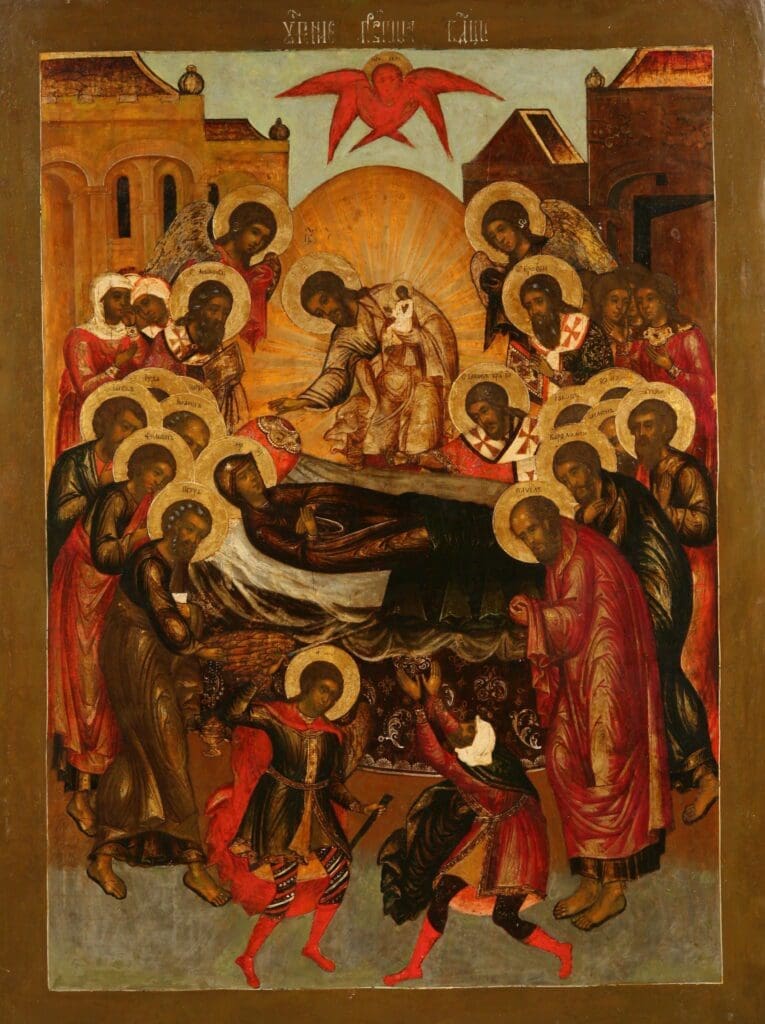On Sunday, 15 August, Christians around the world remember the end of the earthy life of the Blessed Virgin Mary and her entrance into eternal life. Catholics of the Latin rite observe the Assumption as an article of faith: The Virgin Mary died and her body and soul were taken up into heaven by her son, Jesus, and glorified.
“To share in Christ’s Resurrection,” St. John Paul II said during his General Audience on 25 June 1997, “Mary had first to share in his death. The New Testament provides no information on the circumstances of Mary’s death. This silence leads one to suppose that it happened naturally, with no detail particularly worthy of mention. If this were not the case, how could the information about it have remained hidden from her contemporaries and not have been passed down to us in some way?”
In the same address, the pontiff added: “It can be said that for Mary the passage from this life to the next was the full development of grace in glory, so that no death can ever be so fittingly described as a ‘dormition’ as hers.”
Eastern Christians, Catholic and non-Catholic, celebrate the feast of the Dormition of the Mother of God, or the falling asleep of the Virgin Mary, which commemorates her transition from earthly to eternal life. It is the final major feast of the liturgical calendar year, and in the Eastern churches the feast is preceded by a strict two-week fast.
“Neither the grave nor death could contain the Mother of God, the unshakable hope, ever vigilant in intercession and protection,” reads the Byzantine kontakion, or hymn, for the feast.
“As Mother of Life she has been taken over into life by him who dwelt in her ever-virgin womb.”
As the sainted pope reminds us, there are no scriptural references for the feast. But through the course of Christian tradition — beginning in the early Christian period in both East and West — the belief in her falling asleep and entrance into eternal life, body and soul, evolved. This development in Christian belief culminated in the dogmatic declaration of the Assumption of Mary by Blessed Pope Pius XII on 1 November 1950.
Why would a feast, with no obvious scriptural references, become such an important event in the life of the church, East and West?

While there have been excesses in the history of the church in reference to the veneration of the Virgin Mary and the saints — “we must not honor the saints to excess, we must honor their master,” cautions the fourth-century church father St. Epiphanius of Salamis — one cannot separate the Dormition or the Assumption of Mary from the Paschal Mystery.
Her death and entrance into eternal life remind us of Christ’s triumph over death, and what awaits all Christians after they die: the resurrection of the body and life everlasting. “This is our faith. This is the faith of the church,” we are reminded at the rites of Christian initiation. “And we are proud to profess it in Christ Jesus our Lord.”
Even in her death, the Virgin Mary is offered to us as an example, a model, identified specifically with the body of Christ, the church:
“As St. Ambrose taught,” wrote the fathers of the Second Vatican Council in “Lumen Gentium,” “the Mother of God is a type of the church in the order of faith, charity and the perfect union with Christ.”
May Mary, Mother of God, continue to show us the way.